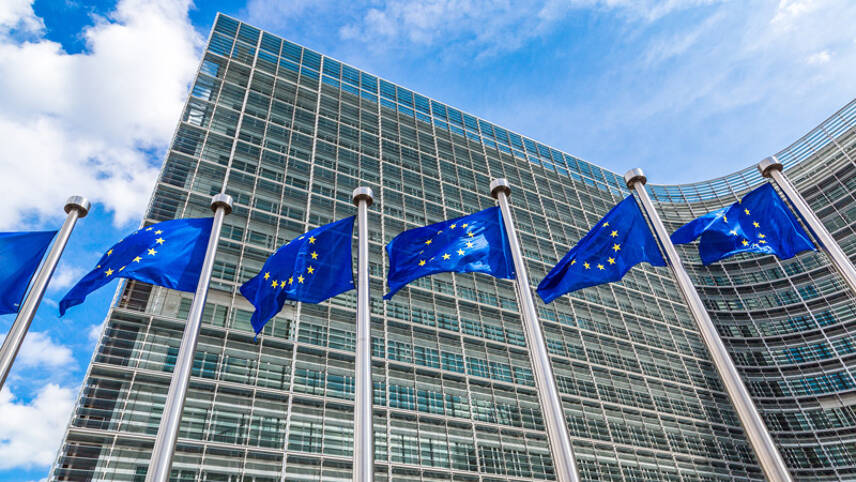Register for free and continue reading
Join our growing army of changemakers and get unlimited access to our premium content

The so-called carbon border adjustment mechanism (CBAM) will mirror the EU’s own domestic carbon price, thereby shielding European industry from cheaper, more-polluting products imported from abroad.
It will initially apply to imports including iron and steel, cement, aluminium, fertilisers and electricity as well as hydrogen.The agreement was sealed the day after the G7 group of industrialised nations announced the creation of an “international climate club”, aimed at fostering greener industry.
“For the first time, we will ensure fair treatment for our enterprises, which pay a carbon price in Europe, and their foreign competitors, who do not,” said Pascal Canfin, the chairman of the European Parliament’s environment committee.
“This is a major step that will allow us to do more for the climate while protecting our businesses and our jobs,” he said in a statement.
“CBAM will be a crucial pillar of European climate policies. It is one of the only mechanisms we have to incentivise our trading partners to decarbonise their manufacturing industry,” said the European Parliament’s lead negotiator, Mohammed Chahim.
Jozef Síkela, industry and trade minister for the Czech Republic, which ran negotiations on behalf of the 27 EU member states also welcomed the deal as a key part of European climate action. “This mechanism promotes the import of goods by non-EU businesses into the EU which fulfil the high climate standards applicable in the 27 EU member states,” he said. “This will ensure a balanced treatment of such imports and is designed to encourage our partners in the world to join the EU’s climate efforts.”
The levy will be launched on 1 October 2023 for a test period that imposes only reporting obligations on the imports of goods covered by the scheme. After this transition period, the full levy will kick in. However, the end of the test phase is yet to be decided and will be discussed in further negotiations at the end of the week.
The levy will cover imports of iron and steel, cement, aluminium, fertilisers and electricity, in line with the European Commission’s initial proposal tabled in July 2021. Following Tuesday’s agreement, it will also cover hydrogen, indirect emissions under certain conditions and some downstream products.
Any companies importing these into the EU will have to buy certificates to cover the carbon emissions embedded in them unless they can prove they have already been accounted for by climate legislation in the producer country.
Over time, the levy will replace the much-criticised allowances that EU industries currently receive for free under the bloc’s carbon market, the Emissions Trading Scheme (ETS).
“It is an alternative to our current carbon leakage measures, which will allow us to apply the polluter pays principle to our own industry,” added Chahim.
Scope expanded
In the negotiations, the European Parliament pushed to expand the number of sectors covered by the levy beyond what the European Commission had suggested in 2021.
Lawmakers succeeded in including hydrogen, which is mainly produced from coal in non-EU countries, according to a November paper from the EU executive that assessed the possibility of including more sectors.
The paper said that, while imports of hydrogen are currently quite low, they are foreseen to grow in the coming years and that “the introduction of hydrogen appears less complex than the inclusion of other sectors under consideration for an extension”.
The European Parliament also succeeded in including processed products, such as screws and bolts and similar articles made from iron or steel.
Other downstream products could be added following a review carried out before the end of the transition period. The inclusion of organic chemicals and plastics will also be assessed before the end of the transition period.
Alongside these, the European Parliament wanted to include indirect emissions – those caused by the production of the energy used in the manufacturing process. This proved a major sticking point in the final, 10-hour negotiation. In the end, indirect emissions will be included “under certain circumstances”, with more work required to finalise the details.
Exports and phase-out date left blank
Two of the major elements of the levy remain undecided. These are the timeline for when the levy comes into force and whether to compensate EU exports, which won’t be protected by the tariff.
Both of these will be discussed in a “jumbo” round of negotiations later this week as part of talks to reform the EU carbon market.
“I am hopeful that, by this weekend, the picture will be complete for this mechanism,” said Nicu Ștefănuță, a Romanian MEP who negotiated on behalf of the centrist Renew Europe group in the European Parliament.
“CBAM is the EU’s game changer for sustainable trade and will have positive effect in our aim to achieve the Paris Agreement target,” he added.
Meanwhile, the industry is pushing hard for a gradual phase-out of free allowances and support for exports, warning that without this, the levy will fail to prevent businesses from relocating out of the EU.
“A robust CBAM that helps the industry compete means a gradual transition from free allowances to full CBAM certification,” said AEGIS Europe, an industry group that brings together more than 20 European manufacturing associations.
“It also requires a workable and defendable export solution at the WTO level and a very sophisticated and solid anticircumvention regime,” it added.
Kira Taylor, EurActiv.com
This article first appeared on EurActiv.com, an edie content partner


Please login or Register to leave a comment.